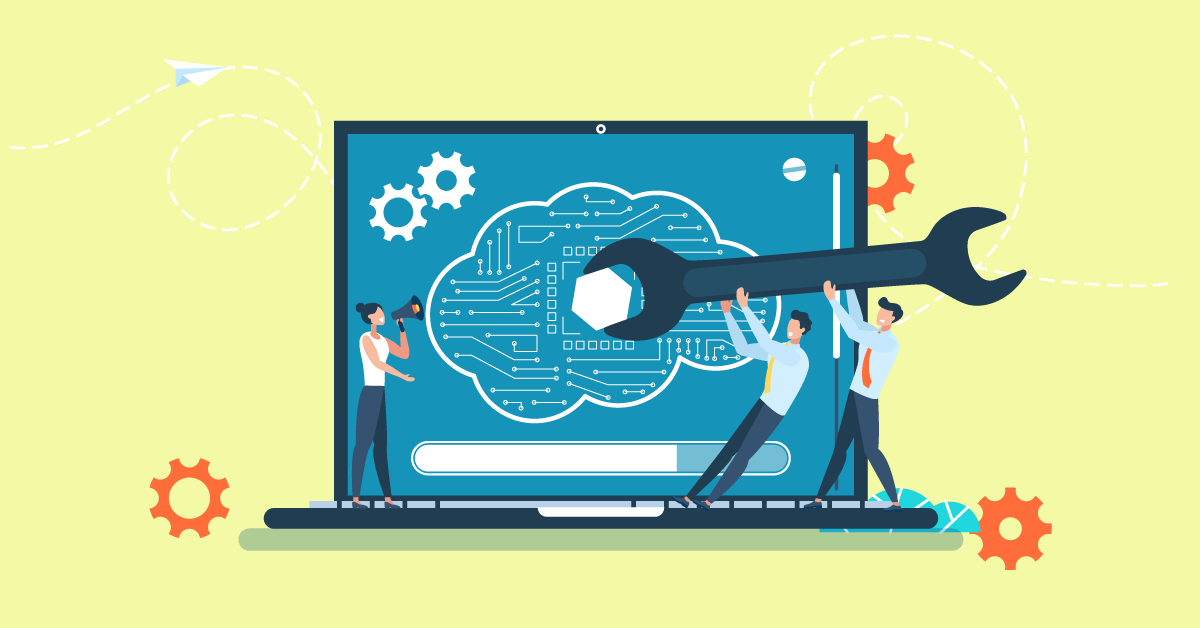Just another day at the office? Not so much. Well, not anymore.
Today, Joe is probably required to learn new tools every year, his team is probably globally dispersed, and it’s probably more important for them to be adaptable than specialized.
Today, customer demands evolve at a rate we can barely keep pace with, and employer-employee relationships grow more complex with every new and younger generation that reaches working age. Technology cycles get shorter, and the distance between teams gets longer.
This is the changing workforce, and it’s called Workforce 2.0.
Understanding Workforce 2.0
You’ve probably heard of Workforce 2.0 before, but you might not really understand what it means. And if you’ve come across someone from Workforce 2.0, you probably found their approach to work quite, well, alien.
But these “aliens” are the way of the future, and understanding their behaviors and preferences is the first step toward leveraging their talent and adapting to the upcoming workplace trends. So, here’s the scoop.
Where They Work
Employees used to work in offices. You know, those walled-up spaces with limited natural light, built especially to confine people together to work toward a common goal, with a shared purpose. In offices, teams communicate in-person, daily, and “water-cooler chats” give way to organic knowledge transfer.
The thing is, Workforce 2.0 prefers their couches, coffee shops, libraries, and really anywhere they can get a strong enough Internet connection. They control their environment and choose what suits them, personally, to be most productive “at” work.
Sounds great, doesn’t it?
That’s probably why over 43% of employees work remotely, at least some of the time. And why more and more people want to join virtual teams who communicate via Skype while sipping coffee in their pajamas. Because remote work offers employees mobility and flexibility, like traveling the wide, wide world while holding down a full-time job.
When They Work
Now, full-time jobs have always been one of the essential checkboxes of adulthood. You know, finish school, get a degree, find a permanent position at an established company. Then, work 9 ‘til 5, Monday to Friday, until it’s time to retire to the Canary Islands for sun and sand.
But the changing workforce of today doesn’t conform to the “essential checkboxes of adulthood”. No. They work (get this) when they want to work. Workforce 2.0 is full of free agents – independent freelancers and temp workers who control their own working hours.
These forward-thinking rebels harness their talent only when they find projects or contracts that tickle their fancy. These contracts usually stipulate scope and level of service, but don’t dictate when and where the free agent works. This means more flexibility to work when inspiration grabs a hold, like the night owl who works better once the sun goes down (and then enjoys a sleep-in the next morning).
How They Work
Traditional employees have a definitive job description, with specific tasks, and measurable outcomes. So, they work in a way that will enable them to achieve those outcomes, and perform their role better and better with each passing performance review.
But, Workforce 2.0 is guided more by the meaning and consequence of work, than the tasks described on a piece of paper. They look for projects that challenge them, fulfill them, and align with their personal development goals. So, their approach to work is, you could say, a little different.
This workforce is more individualized, more demanding of its employers, and more prepared to adapt to change and learn new skills and technologies. They’re ready for it. In fact, they crave it.
Adapting to a Complex Workforce
Workforce 2.0 is multigenerational and geographically dispersed.
This workforce encompasses as many as 5 (yes, 5!) generations, each with a different perception of when, where and how to work. Gaining influence above all others is the millennial generation – a group estimated to account for 75% of the workforce by the year 2025; a generation driven by a deeper purpose in life and work.
The increasingly remote nature of teams introduces further complexity: An interesting mix of cultures, experiences, and sometimes-conflicting opinions held by dispersed team members. Of course, this complexity can be advantageous. More diversity means more creativity and innovation. And remote teams mean fewer facility costs and less travel time.
However, integrating this complex combination of people is, well, challenging. Conflict must be controlled, innovation must be leveraged, and performance must be managed, often from a distance.
So, here are a few ways to adapt, and get the most out of Workforce 2.0
● Develop strong online communication and performance management processes to control a remote team. Popular communication tools include Skype and Google Hangouts. Online performance review systems help managers to provide feedback to remote teams.
● Create virtual team-building sessions to build a cohesive team, motivated toward a common goal. By using gamification, online team-building is made fun and engaging for dispersed employees.
● Use customizable online training solutions to cater to the different learning preferences of each generation, and to attract top-talent Millennials who look for continuous personal growth and development opportunities in their work.
How To Adapt To Free Agents
It’s easy to argue that technology is making many full-time “human” jobs redundant. But not many people know that 30% of the workforce actually chooses to be free agents, and thus, out of a permanent job.
This sub-group of the changing workforce has been dubbed the Gig Economy. They choose to find chunks of work at a time, work that interests them so that they have flexibility, mobility, and control over their own growth and development.
At the same time, businesses are appreciating this just in time workforce – staff who can be contracted just when businesses need them most. Just-in-time (JIT) staffing has become a more flexible solution for employers who struggle to predict customer demand and upcoming projects with much certainty. This means that they don’t always have enough talent, or the right talent, for the job.
Today, businesses reduce costs by meeting actual, rather than forecasted, staffing needs. They get the most suitably skilled temporary employees when they need their skills.
But while the flexibility of Workforce 2.0 is beneficial, the non-committal nature of JIT staffing means that it brings a few challenges. Like team members who don’t really feel like part of the team, the continuous influx of new recruits who aren’t familiar with the business culture, and quality standards that wane due to disengaged temp workers.
Fortunately, there are ways to adapt to Workforce 2.0 so that your business achieves all of the benefits, and little to none of the disadvantages:
● Use technology and apps to source freelancers with a high-performance track record. Upwork, for example, helps employers find skilled candidates from all over the world while offering measures to protect the employer against poor or non-performance.
● Find collaborative tools that support blended team structures, such as Learning Management Systems (LMS) with discussion forums or chat features. This helps teams to align, collaborate and learn from each other.
● Employ eLearning solutions as a scalable way to offer onboarding to new, temp and remote workers who join the team.
Why It Matters
If we do not change, we’ll stay the same. Or so they say. And staying the same while the workforce changes around us can only make us irrelevant.
The good news is that Workforce 2.0 has so many benefits to offer business, like employees who work on projects because they are passionate about them. Or remote workers who are more productive because they work when and where they feel the most motivated. Of course, there are the cost savings of JIT staffing and smaller facilities, too.
So, you should care about the changing workforce, and how you can adapt to make the most of it. The future starts today.


